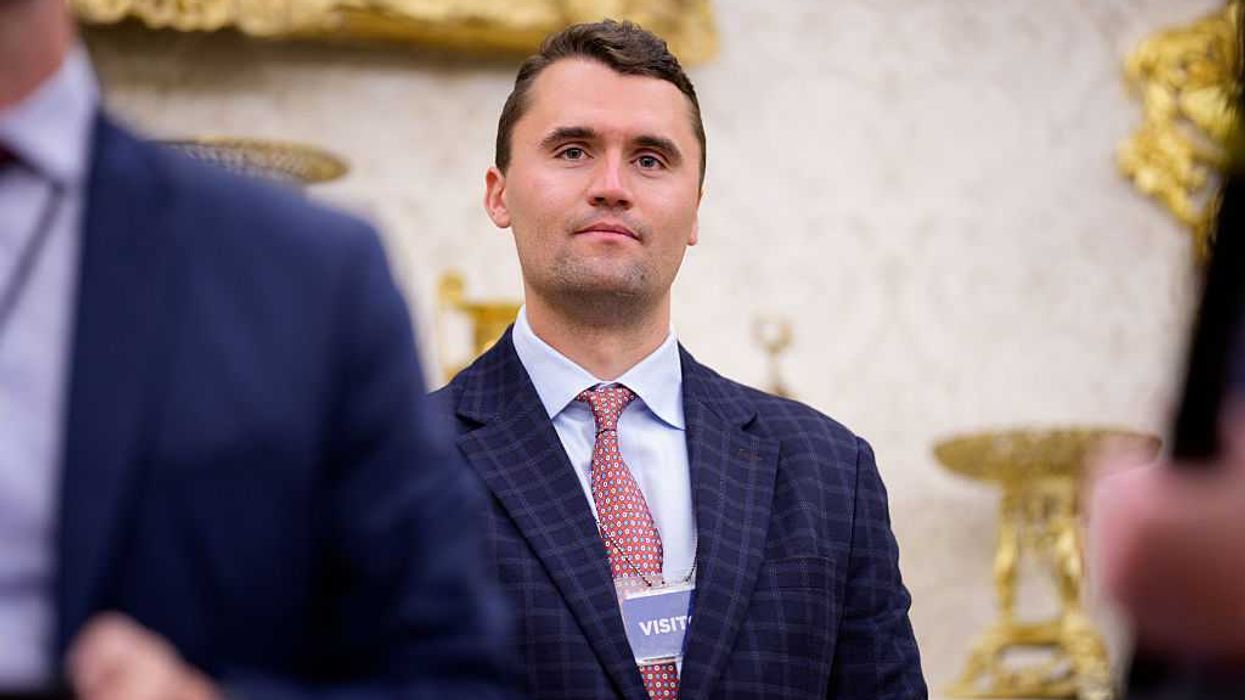One question was on the minds of people watching Wednesdays's Republican National Convention: Would Ted Cruz endorse Donald Trump during his speech?
"Last night was an amazing night that was a turning point, truly a turning point. A remarkable thing happened last night," Glenn said Thursday at the top of his radio program.
Cruz did not endorse Trump, but instead urged voters to vote their conscience and stand for the Constitution.
RELATED: Why Ted Cruz’s Huge Convention Gamble Will Pay Off in the End
"Vote up and down the ticket your conscience. Stand for the Constitution. Stand for the person who will not divide and will not spread hate, but spread love and understanding," Cruz said.
When it became apparent Cruz would not be endorsing Trump, the reaction on the convention floor was palpable, many began booing.
"You know how that booing happened? Trump had sent people out, prepared for this. And while Cruz was saying, hey, you've got to vote for the person who spreads love and not division and hate, the Trump people were in the audience whipping the audience into boos," Glenn said.
In an article posted on The Resurgent, conservative writer Erick Erickson said he was washing his hands of it all.
"Listen to this, from Erick Erickson today," Glenn said:
I have done my bit to sound the alarm, to raise the red flag, to point out the now near certain future of a Clinton administration. There has thus far been at least half a dozen elected Republicans who have already taken the stage in Cleveland who have privately, personally told me they agree that Trump will lose.
I have done what I thought necessary. I am now going to move on to other things. The GOP has decided to commit electoral suicide. Many Trump supporters think that I will somehow come around to the notion of voting for Trump because they see Trump as better than Hillary Clinton. I see them both as unqualified for office, and I feel no obligation to help American voters destroy the republic. If I vote in the presidential race at all, I will write in "Peyton Manning." At least he's a winner of good character. Certainly, he won't win, but at least I'll have voted for somebody morally fit for office. My only lingering question is whether I will vote at all. At this point, as I write this, the truth is, I do not think I belong to the current Republican Party.
"I don't. Do you?" Glenn asked.
"Absolutely not. I could barely watch the convention. The only thing I could stand was Ted's speech, and that was difficult because they were booing him at the end, when he's talking about the Constitution and your conscience. They boo him!" Co-host Pat Gray exclaimed.
"And that's the thing that's interesting about that, is the audience knows that if someone tells you to vote your conscience, that means don't vote for Donald Trump," Co-host Stu Burguiere added.
The Cruz speech was great, but the crowd's reaction took it to another league.
"The booing turned it into a legendary speech," Stu said.
"Legendary," Glenn agreed.
Was the Trump campaign so annoyed at Cruz they tried to ruin his moment? If so, it didn't work.
"The bottom line is, I think it backfired. I think it helped Cruz. Now, if Trump wins by 20 points and he's a great president, I mean, Cruz is done politically, surely. But if he doesn't, who else do you look to that stood up and opposed this man?" Stu said.
Cruz's character was on full display last night.
"Who else can you find that stood up in front of 30 million people and did one of the most difficult and brave political things you will ever see in your life?" Stu asked.
"And they called him a coward for it," Pat said. "They're booing him, and he muscles through it."
Glenn and his co-hosts all agreed they were "damn proud" of Cruz.
"The easiest thing would have been for him to stand up, cave in, and say, 'I'm a Republican, I signed a pledge, I endorse Donald Trump,'" Pat said.
"I was saying the whole time, like the last five or eight minutes, 'Don't cave. Don't cave. Don't cave,'" Glenn said. "The reason I felt that way was because of the wave of hatred that was coming his way. It was a tidal wave."
The tidal wave of hate became so real that Cruz's wife Heidi had to be removed from the convention floor.
"I said it in stump speeches for him, I said, 'Here's a guy who will plant his flag on the point, and no matter what storm or tidal wave comes his way, he knows his principles, and he will not move.' You saw that last night," Glenn said. "For him to get quieter and not shout over their boos, to not take a cheap shot, to do nothing but finish that speech the way he intended took remarkable courage, remarkable courage."
Enjoy this complimentary clip from The Glenn Beck Program:
Featured Image: Sen. Ted Cruz (R-TX) delivers a speech on the third day of the Republican National Convention on July 20, 2016 at the Quicken Loans Arena in Cleveland, Ohio. Republican presidential candidate Donald Trump received the number of votes needed to secure the party's nomination. An estimated 50,000 people are expected in Cleveland, including hundreds of protesters and members of the media. The four-day Republican National Convention kicked off on July 18. (Photo by Joe Raedle/Getty Images)


 Eric Lee / Stringer | Getty Images
Eric Lee / Stringer | Getty Images
 Andrew Harnik / Staff | Getty Images
Andrew Harnik / Staff | Getty Images Hesham Elsherif / Stringer | Getty Images
Hesham Elsherif / Stringer | Getty Images